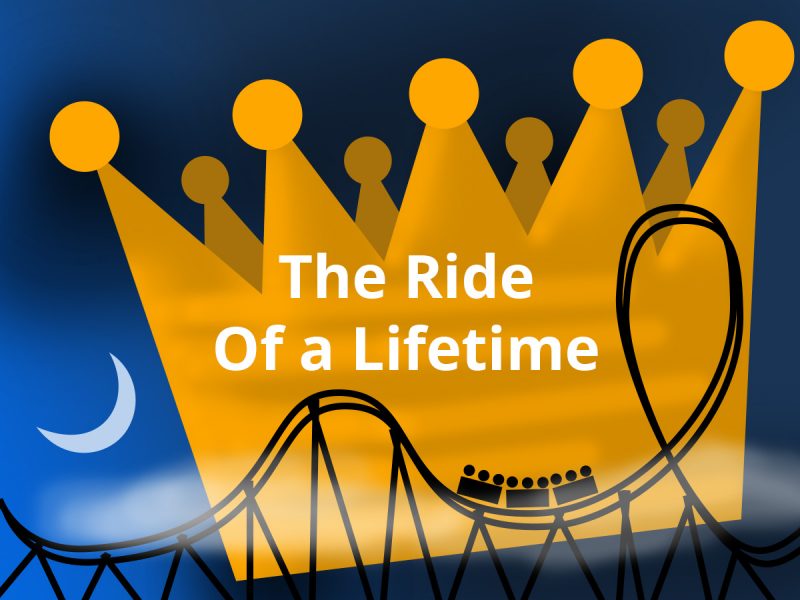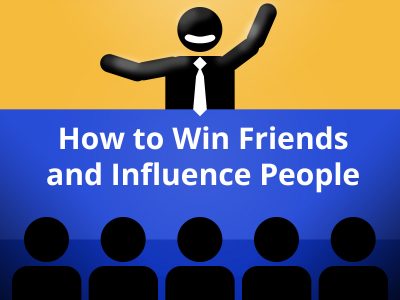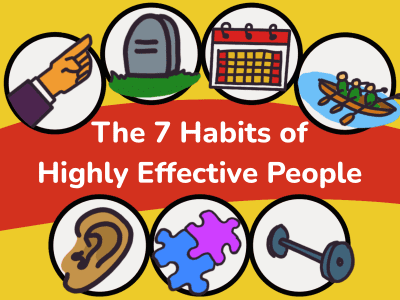How did Disney become such an important company? With the right strategy, some good luck, and—most of all—great leadership.
- Walt Disney started the animation company in the 1920’s,
- Michael Eisner revived it in the 1980’s, and
- Robert Iger brought it into the global digital era in the 2000’s.
In The Ride of a Lifetime, Iger shares the story behind how he became the CEO of Disney. (Believe it or not, he actually began his career as a local TV weatherman!) This isn’t a book of business lectures. Iger is truly taking us along for the ride and describing the relationships that shaped him most.
Personally, I really enjoyed hearing about Iger’s negotiations with iconic leaders like Steve Jobs, George Lucas and Rupert Murdoch. (If you don’t know, those guys created Apple, Star Wars and Fox Corporation, respectively.) Glimpses into Iger’s conversations with those men reveal how business at the highest levels is done.
About Robert Iger
Robert Iger (TheWaltDisneyCompany.com), who is often called Bob, was Disney’s CEO from 2005 to 2020. He started working at ABC in 1974 as an entry-level studio supervisor. As ABC merged with a company called Capital Cities and then later Disney, Iger rose to become the leader of the massive organization. In 2018, his yearly compensation peaked at $65 million.
1. Love Exertion: Learning to work towards a better future
In this book, one fact is impossible to miss: Bob Iger has a very strong work ethic. For example, before his first interview to become the CEO of Disney, he woke up at 4 AM to finish the first part of a triathlon. Now that’s crazy!
Where does that kind of love for exerting effort come from? Well, I noticed 3 possible causes while reading his book:
- Nature. Iger said he always got up early, and even today wakes up at 4:15 AM daily. (To read, think and exercise in peace before the real workday begins.)
- Nurture. Iger’s father taught him discipline. He was always being guided not to waste time but to spend it productively learning something useful.
- Learned Experience. In his early teens, Iger began working for money at various jobs that required long hours of physical labour, including being a summer janitor at schools scraping gum off desks for hours.
Angela Duckworth, a psychology researcher and Professor, has deeply studied a character trait very similar to work ethic that she calls “grit.” Grit can be summarized as someone’s ability to sustain effort in one direction for many years, not giving up despite failure or lack of progress. And her research shows people’s level of grit determines their success more than anything else, even IQ.
The good news is that we can increase our grit. Psychologists have discovered the most important keys are:
- Having a ‘growth mindset’ (which means believing that we can improve), and then
- Putting in many hours of ‘deliberate practice’ (which means focusing intensely while we are training, studying or working).
Bob Iger has an outstanding work ethic, necessary to become the CEO of a massive company like Disney. From a young age he always woke up early, his father taught him to spend time productively, and he worked many discipline-promoting jobs as a teenager.
2. Pursue Perfection: Raising our standards far beyond “good enough”
Bob Iger graduated university and then worked for one year as the weatherman at a local television station. He quickly decided that work wasn’t for him. In 1974, he was hired at ABC as a studio supervisor, which meant doing all types of manual work to prepare the studios for filming.
Soon, Bob was moved to ABC Sports where he met Roone Arledge, his first big career mentor. Roone taught Bob to always try new things and relentlessly pursue perfection.
Roone was a legend in the televised sports industry. He was extraordinarily competitive and held his people to high standards of performance. Roone pioneered many innovations. He was always testing new camera angles, new editing styles, new ways of telling the athlete’s stories.
A big theme throughout The Ride of a Lifetime is viewing new developments not as a threat, but an opportunity. To survive in business we must embrace change all the time, especially if we work in a fast-paced industry like entertainment. Iger makes this point clearly when he writes: “Innovate or die, and there’s no innovation if you operate out of fear of the new or untested.”
Amazon.com was growing fast in the mid-2000’s. At the time, they were selling mostly paper books, music CDs and movie DVDs. Then Steve Jobs launched the Apple iPod and iTunes, allowing people to easily buy digital music for the first time ever. As a result, Amazon’s music CD sales suddenly collapsed, which was a huge shock to their company’s leaders.
The founder Jeff Bezos realized that Amazon needed to move fast. They must become the top seller of ebooks before anyone else. The problem was that ebooks risked undermining Amazon’s paper book sales (at that time their largest source of revenue). Well, as you probably know, Bezos took the risk and the Kindle ebook reader was a huge success.
Learn more in our summary of The Everything Store by Brad Stone
In 1974, Iger began his career at ABC, doing manual studio work. At ABC Sports he met Roone Arledge, a career mentor who demonstrated the importance of embracing new things and relentlessly pursuing perfection.
3. Lead With Calm: Remaining optimistic and showing humility
At the 1988 Winter Olympics in Calgary, Bob Iger was in charge for ABC Sports. That year, they faced incredible challenges because the weather caused many events to be delayed or cancelled. So they didn’t have any footage to put on television!
Bob’s team had to come up with some content fast, which required lots of improvisation. Yet despite the extreme pressure Bob remained calm and optimistic. He has always made an effort, even in the face of challenge, to project calm to people around him.
(I think some people like Iger are born with a personality that is less affected by pressure than most of us. At least, I can tell you one thing for sure—most people would be completely overwhelmed knowing that 200,000 Disney employees are relying on their decisions!)
Bob Iger also believes optimism is critically important for good leadership. This doesn’t mean being delusional, but having “a pragmatic enthusiasm for what can be achieved.” In other words, staying focused on what your team needs to accomplish, rather than becoming distracted and overwhelmed by what you don’t have control over. Iger wrote, “Simply put, people are not motivated or energized by pessimists.”
3 years before, a company named Capital Cities had bought ABC. Bob Iger’s new bosses were Tom Murphy and Dan Burke, and they noticed his leadership at the Olympics. They decided to promote Bob to president at ABC Entertainment, when he was just 37 years old.
Suddenly, Bob found himself in charge of the huge ABC television channel, with no idea what he was doing! So he had to learn the art of humble leadership, asking lots of questions without embarrassment. He believed this honest approach is always better than faking expertise, which usually fools nobody anyway.
Bob was promoted rapidly to become president of ABC Entertainment when he was just 37! When leading, he tries to project calm, optimism and humility. It’s about staying focused in the face of challenges and admitting freely when we don’t know something.
4. Encourage Risks: Giving critical feedback with empathy and respect
At Iger’s new position, he was ultimately in charge of which new television series would be shown on ABC. At the time, the media landscape was changing fast with edgier content available on cable TV and video game. So Bob wanted to encourage his directors to take risks so they could captivate audience’s attention again.
Sometimes Iger and his team greatly succeeded with this strategy:
- Twin Peaks was a murder-mystery show directed by JJ Abrams. It was simply different than anything people had seen before and made a huge impact— receiving 30+ million viewers and many awards.
- NYPD Blue was a PG-13 show that stretched the boundaries of what was allowed on network TV, up to light cursing and partial nudity. It was also a giant ratings hit. (This actually followed a failed musical series named Cop Rock from the same director—well, risks don’t always work out!)
- America’s Funniest Home Videos and Who Wants to Be a Millionaire? were two more unique shows that became outstandingly popular for many years. Iger learned that when you try a lot of idea, sometimes you just get lucky and something connects with pop culture.
Throughout his years at ABC and then Disney, Iger has learned some very important lessons about managing creative people. Above all, you don’t want to make people you are leading scared to take risks. So to avoid that, Iger usually starts by communicating that he trust them and has faith in them to do a good job. To offer constructive feedback, Iger says: “Don’t start negatively, and don’t start small.”
Some of the best communication tips that I’ve ever read came from Chris Voss, a former lead hostage negotiator for the FBI. He also speaks about the importance of starting with empathy, even in very difficult negotiations. Voss wrote, “It all starts with the universally applicable premise that people want to be understood and accepted. Listening is the cheapest, yet most effective concession we can make to get there.”
Learn more in our summary of Never Split the Difference by Chris Voss
To succeed in the media world, Iger knew he had to encourage his people to take risks. So when giving critical feedback to a creative person, he would start with the positive and make sure they knew he had faith in them.
5. Focus on the Future: Becoming Disney’s CEO at a tough time
In 1995, everything changed again when Disney bought ABC/Capital Cities for $19 billion. By that time, Bob Iger had been promoted multiple times until he was the President and Chief Operating Officer, basically working just under the CEO. Now, at 45 years old, he was going to be working for Disney and he wasn’t sure what to expect.
The CEO of Disney from 1985-2005 was Michael Eisner. The first 10 years of Eisner’s leadership were legendary. He transformed Disney from a struggling company whose golden days were long past, into the creative giant of the animation industry yet again. During his time, Disney produced many top movies (like The Lion King_ and greatly increased the profitability of its theme parks.
However, during the next 10 years Disney stumbled under Eisner’s leadership. Bob Iger believed there were 3 major problems at Disney:
- Disney Animation was not performing. Their movies were not connecting with audiences like they used to. As a result, they lost $400 million in 10 years. At the same time, Pixar emerged as the new leader in animation, but the business relationship between Pixar and Disney had deteriorated. Iger believed saving Disney Animation would revitalize the whole company, and Pixar could be the key to doing that.
- Centralized decision-making was not working. Eisner relied heavily on a department within Disney called Strategic Planning. It was full of ivy league analysts making all the important decisions. Iger believed this ruined the morale and ability of leaders throughout Disney to make faster and better informed decisions by themselves.
- Fearful defensiveness was stopping creativity. As Disney stumbled, Eisner began communicating with increasing pessimism. Iger believes this was causing many people in the company to become more defensive and avoid risk.
In the beginning, Bob Iger led Disney’s international strategy. For example, he was deeply involved with planning the extravagant new Disneyland in Shanghai, China. After a few years, he was promoted to President, COO and member of the Disney board.
Note: During these many years of Iger’s career, he doesn’t share too many details. I got the impression that life as a corporate leader is more daily responsibility, not daily excitement. In fact, at one point Iger talks about how being a good leader is about putting in the work and sitting through meetings we may not really want to.
In 2005, Eisner suddenly resigned as CEO, following a lot of negative publicity. Iger decided he would try to fill the position. After 6 months of interviews, Iger convinced the board to make him CEO. To make that happen, a brand consultant named Scott Miller offered him many valuable tips, which included:
- Focus on the future, not the past. People believed Disney needed a new direction, but Iger had already worked under the old CEO for years. To overcome this objection, Iger didn’t dwell on past mistakes, but always talked about the new directions that he would take.
- Limit his plan to only 3 strategic priorities. Iger started with dozens of ideas, but the consultant told him it was better to focus on just three powerful aims for the company. Iger decided those would be:
- 1. Creating more high-quality branded content .
- 2. Embracing technology as an opportunity, not threat .
- 3. Becoming a truly global company, especially in countries like China and India.
In 1995, Disney bought ABC/Capital Cities. The company struggled and Disney CEO Michael Eisner resigned in 2005. Bob Iger convinced the board to make him the new leader by talking about his future plan rather than justifying past failures, and focusing on only 3 big points.
6. Take Long Shots: Our odds are often better than we think
Bob Iger strongly believed buying Pixar would give Disney two big benefits:
- Valuable intellectual property (like loveable characters) that Disney could monetize in their theme parks and merchandise.
- Outstanding creative leaders like Steve Jobs, John Lasseter and Ed Catmull that could fix what was broken in the culture of Disney Animation.
However, to make this deal happen he needed to overcome the objections of the Disney board, then Steve Jobs, then Pixar’s other leaders. It was a tricky, narrow road.
- First, Iger persuaded Disney’s board members that the value of Pixar’s assets would be worth more to Disney than they paid.
- Second, he opened the door with Steve Jobs by offering Disney video content on Apple’s first video iPod. This communicated that under Iger’s leadership, Disney was not a slow-moving dinosaur, but open to new ideas.
- Finally, he sold the deal to Pixar’s other leaders by assuring their unique creative culture would remain intact.
And so in 2006, Disney bought Pixar for $7.4 billion. Looking back, it make sense for Disney and Pixar to merge. They both produce animated movies and target a similar audience. However, when Iger first proposed the idea, many people thought it was crazy. In fact, when Iger first mentioned the idea to Steve Jobs on the phone, he expected Jobs to “hang up or erupt in laughter.” But he took the shot anyway, and scored big.
The idea became a reality because of Iger’s willingness to take the shot. He writes that “long shots aren’t usually as long as they seem.” I think many of us are taught as kids to always play it safe, so we quickly dismiss our most exciting goals before we’ve even tried.
Up here in Canada, the legendary hockey player Wayne Gretzky once said, “You miss 100% of the shots you don’t take.” I think we can all use more of that mindset, especially when the consequences of failure are often limited and temporary, while regret may follow us for decades.
In 2006, Disney bought Pixar for $7.4 billion. Before, people wouldn’t have thought it was likely, but Iger took the shot anyway. He made the deal happen because he believed Pixar could uniquely revitalize Disney Animation and provide valuable intellectual property.
7. Sacrifice the Short-Term: Spending money now to make more later
Disney’s successful purchase of Pixar was soon repeated a few more times with similar deals:
- In 2009, they bought Marvel for $4 billion. Right away, the deal was criticized from all sides, with many believing the edgier Marvel brand wouldn’t fit in with Disney. However, since that time, there have been over two dozen Marvel films, averaging more than $1 billion gross sales each at the box office. So it has paid off big.
- In 2012, they bought Star Wars for just over $4 billion. Again, a huge amount to pay, but Iger was confident they could make the money back over several years. To sign the deal, it was key for him to assure George Lucas they would safeguard his legacy.
- In 2019, they bought most of 21st Century Fox for $71 billion. An eye-boggling amount of money! In this case, they bought multiple film and television studios, including the rights to hundreds of prominent movies and TV series (like National Geographic and The Simpsons). Again, this deal was part of a longer-term strategy…
We’ve all heard the saying, “You’ve got to spend money to make money.” Sometimes, this is absolutely true. Disney was only spending all those billions, because Bob Iger believed they would make all that money back and more, over the long-term. He wasn’t thinking about quarterly profits, but about Disney owning valuable franchises they could monetize for the next 10, 20 or 30 years.
In fact, this is the basic strategy that almost every smart, rich person uses. They sacrifice money now to buy assets they expect to make them more money in the future. Any successful local landlord or business owner follows this rule just as much as giant corporations like Disney.
… For example, Phil Knight was the founder of Nike, which is today the largest sports wear company in the world. But for the first several years, it was a small startup. Phil grew his company fast by always reinvesting almost all their profits. That meant ordering thousands of new shoes, hiring dozens of new factories, and training hundreds of new employees.
In 2019, Bob Iger announced Disney Plus, the cornerstone of their new direct-to-consumer strategy for distributing content. They were shifting away from old methods of distribution like movie theatres and television networks. Now all those big deals made a lot more sense to everyone. Disney had been stocking up on content for their new streaming platform! Within 5 years, they aimed to have up to 90 million subscribers.
All three of Iger’s original priorities for Disney were now coming together in this one core service. Disney Plus focused on high quality original content, embracing technology as an opportunity, and going global. It was a fitting finish to Iger’s career, which he describes as ‘dreamlike.’
Disney bought Marvel in 2009, Star Wars in 2012, and (most of) 21st Century Fox in 2019. It was all about investing billions now, to buy assets they expected to pay back even more money in the future.
- Aim to be 1% better today than yesterday. This is the most practical way to relentlessly pursue perfection, as Iger recommends. Over the months and years, those small 1% improvements will compound into a remarkable transformation.
- Give positive, broad feedback first. When offering some type of criticism or guidance, then “don’t start negative, and don’t start small.” Beginning with expressing what you like helps the other person know you have faith in them to do a good job. After that, you can talk about what needs to be changed.
- Limit big plans to 3 major priorities. What do you need to accomplish today, this month, and this year? We often feel that a longer to-do list is better, but really that may just dilute our focus from getting the big things done.



















Community Notes